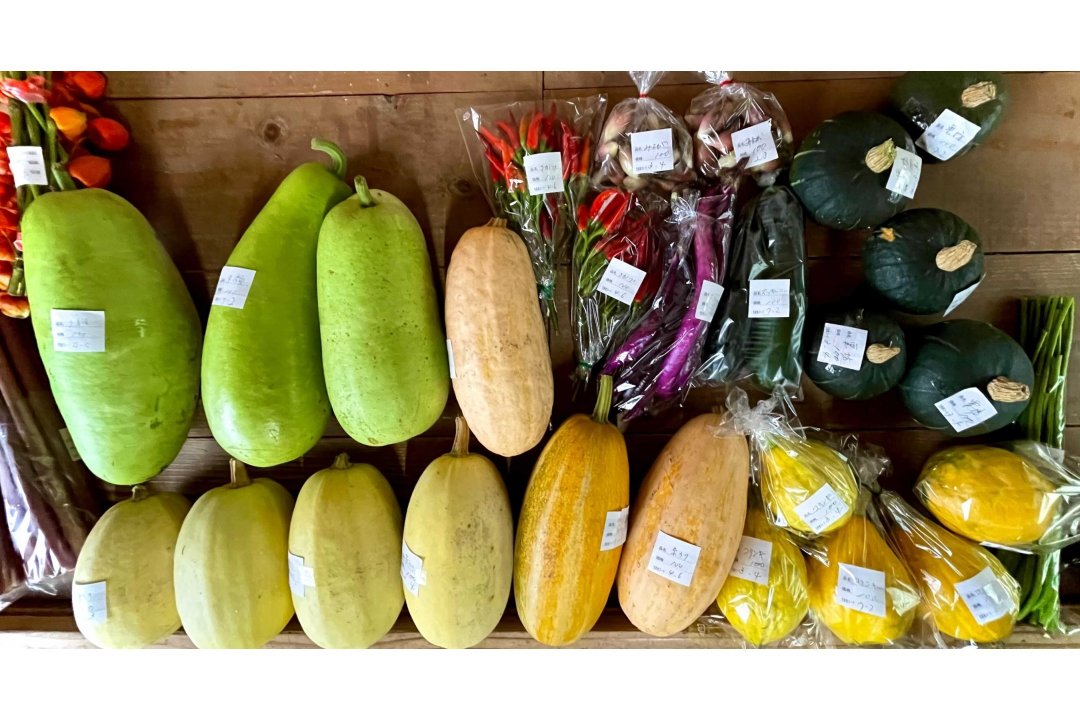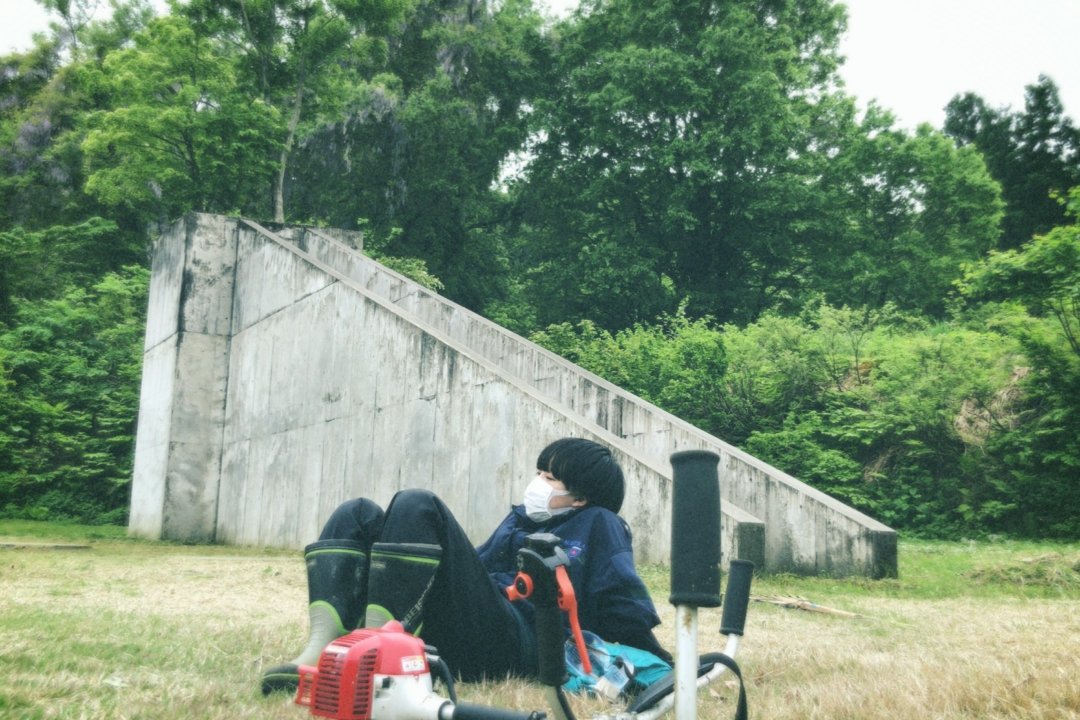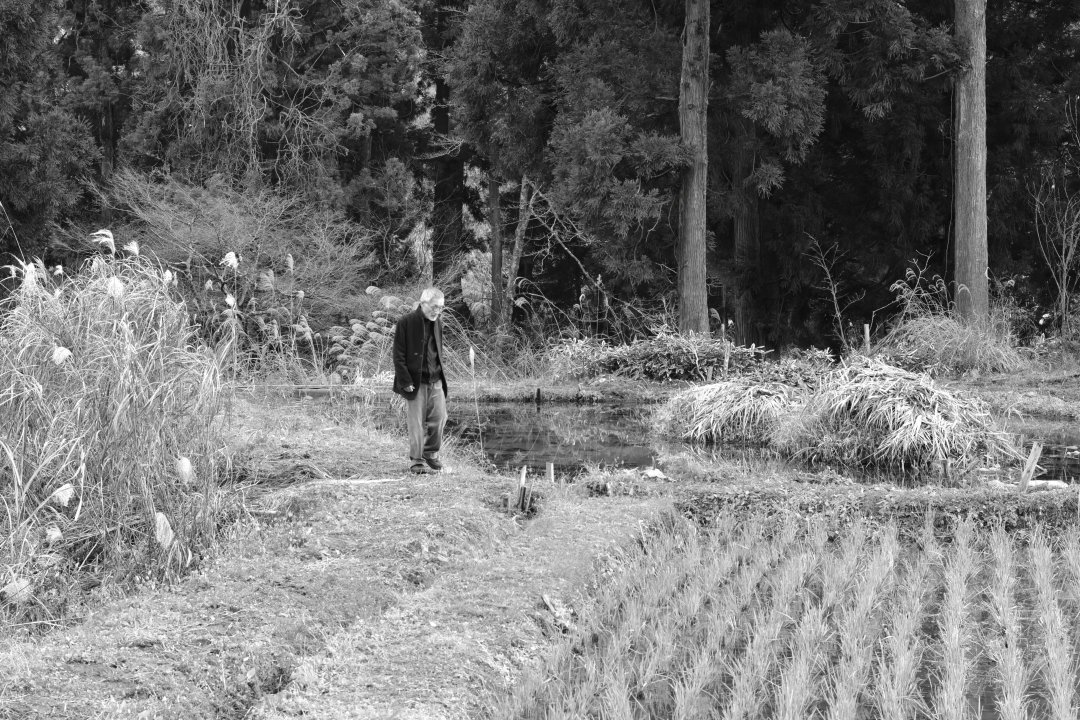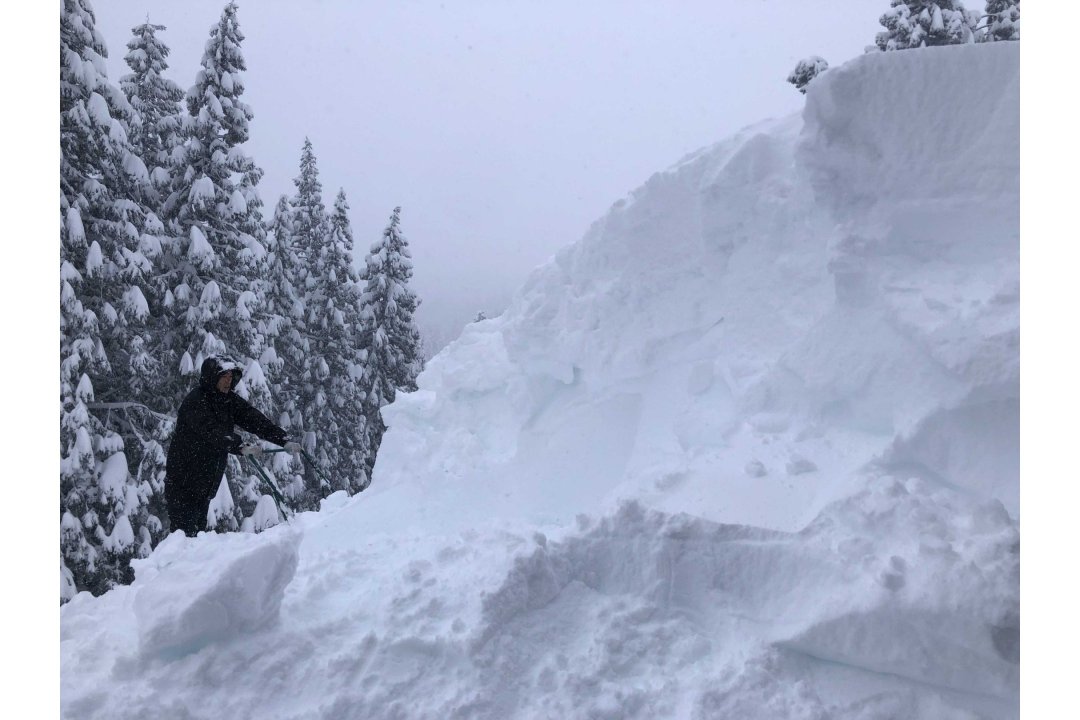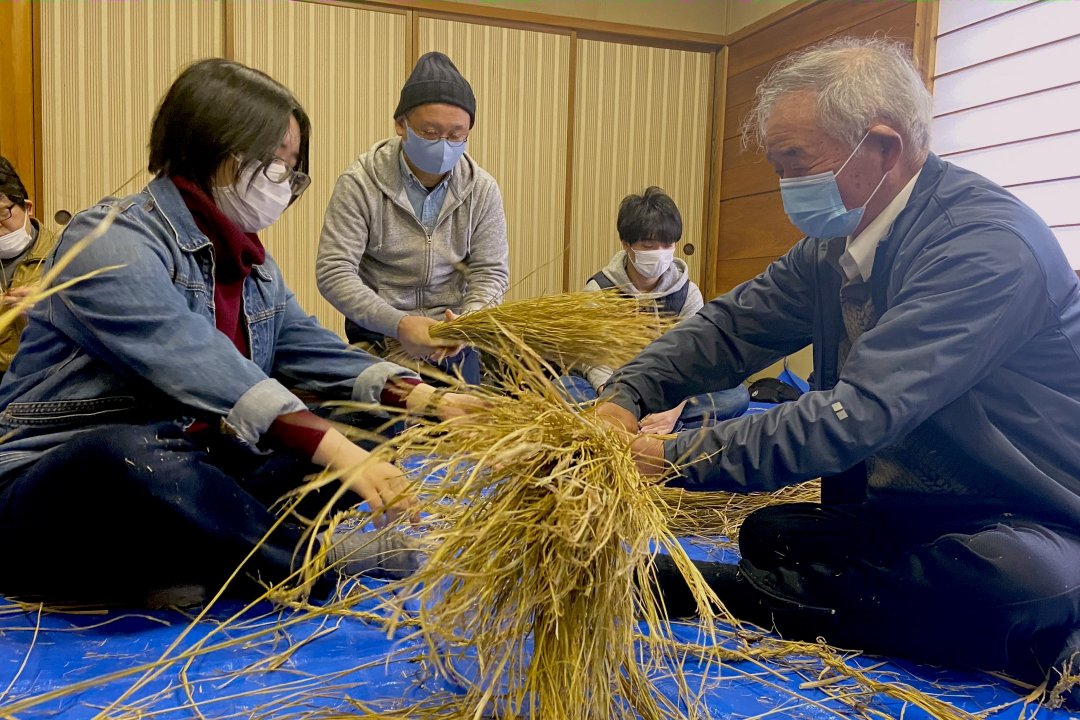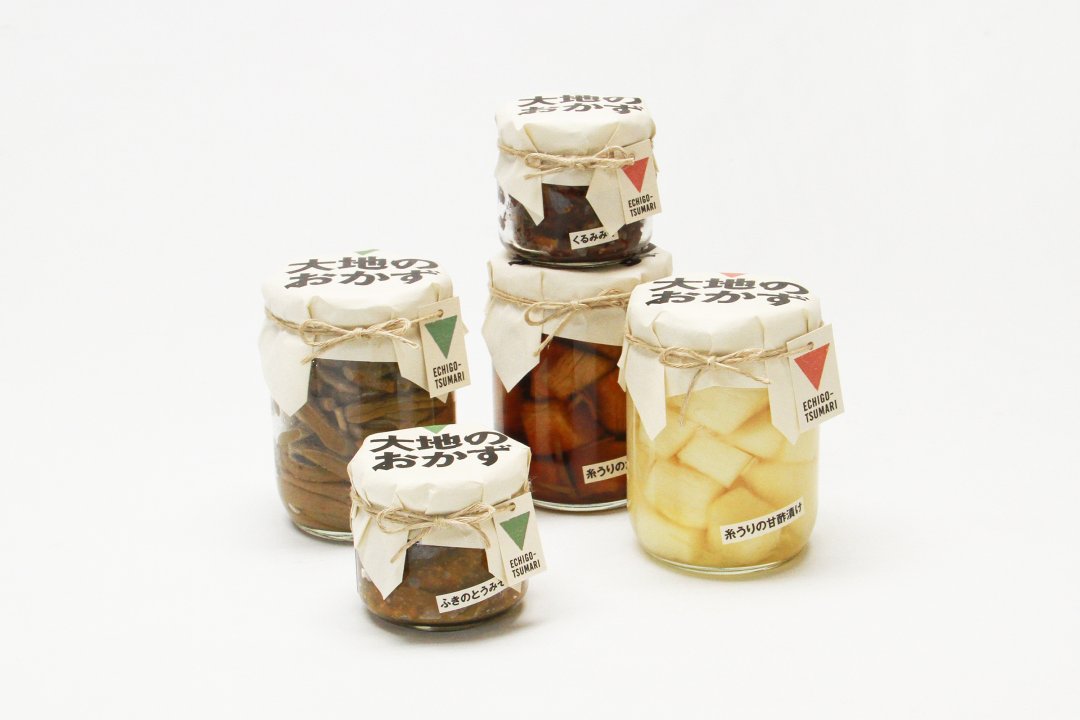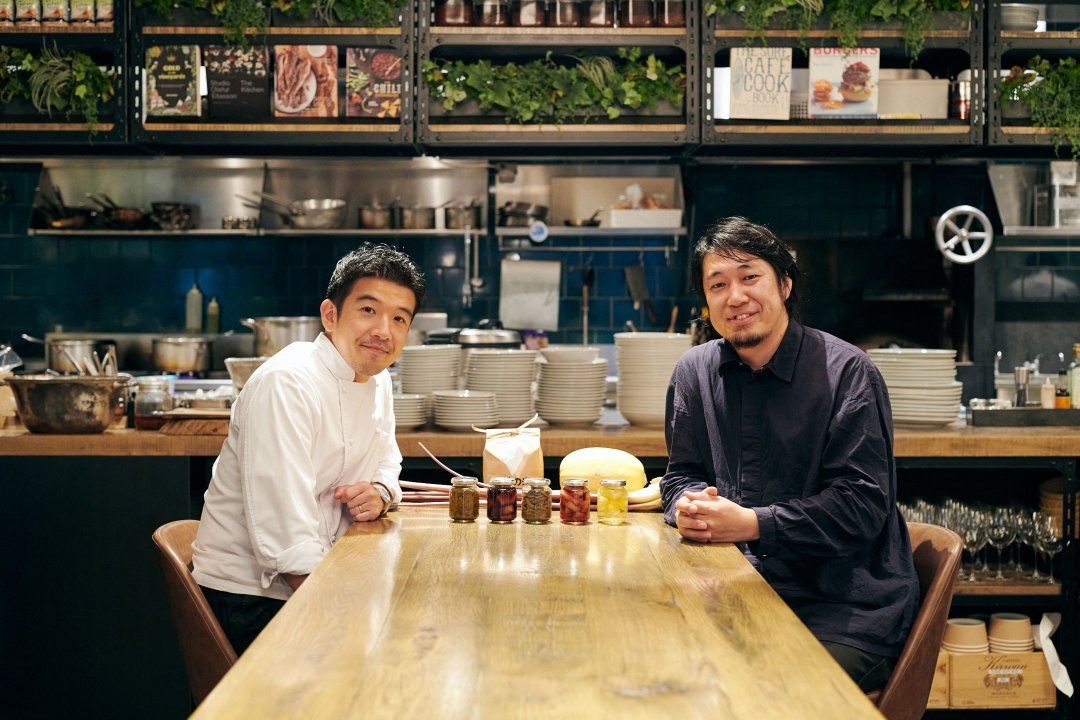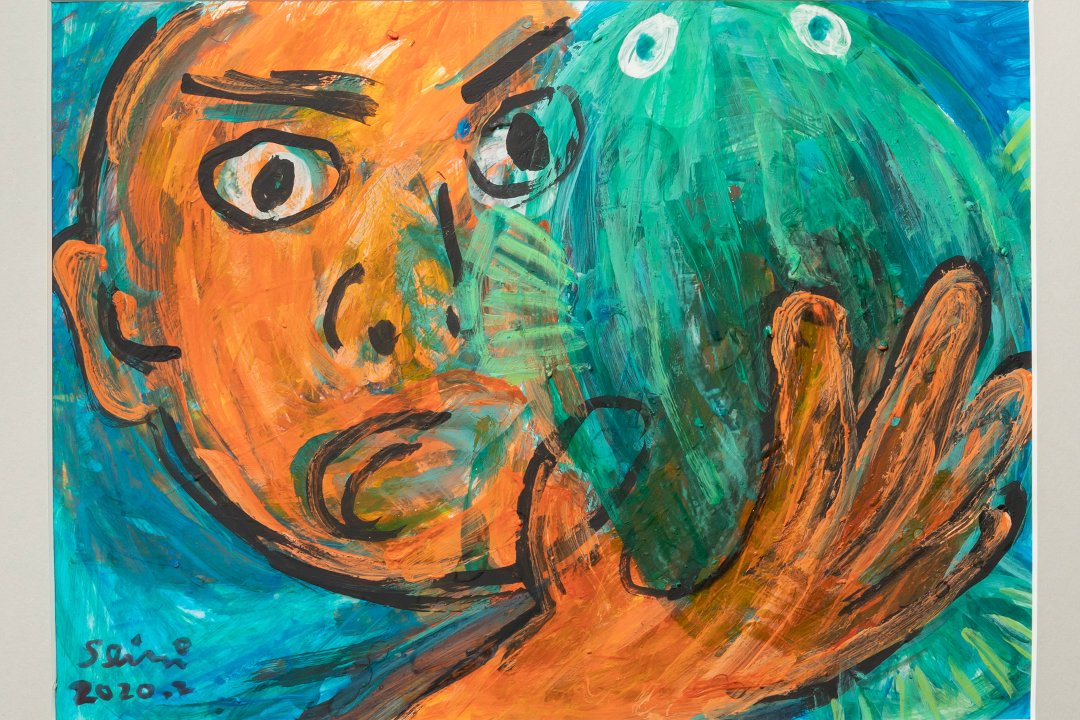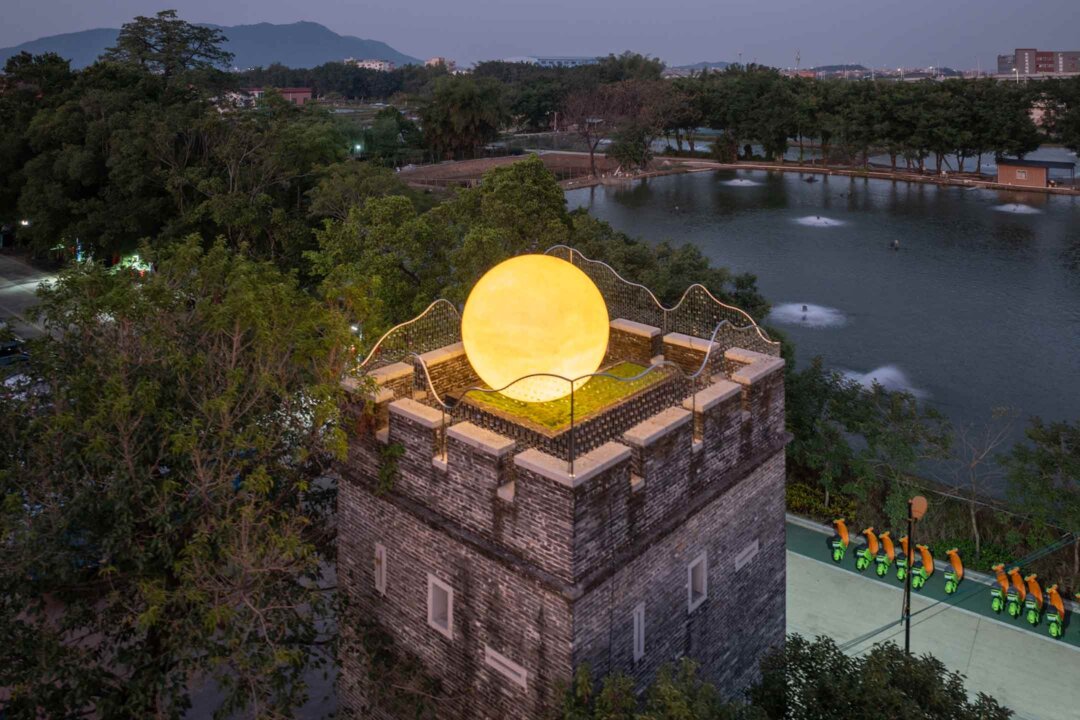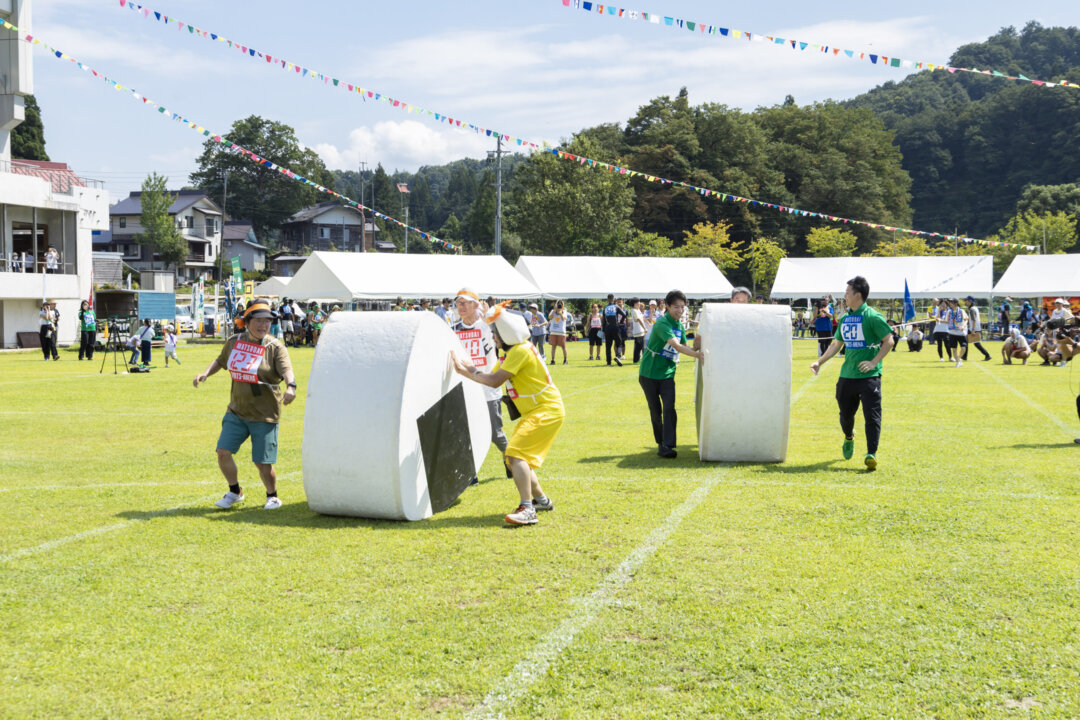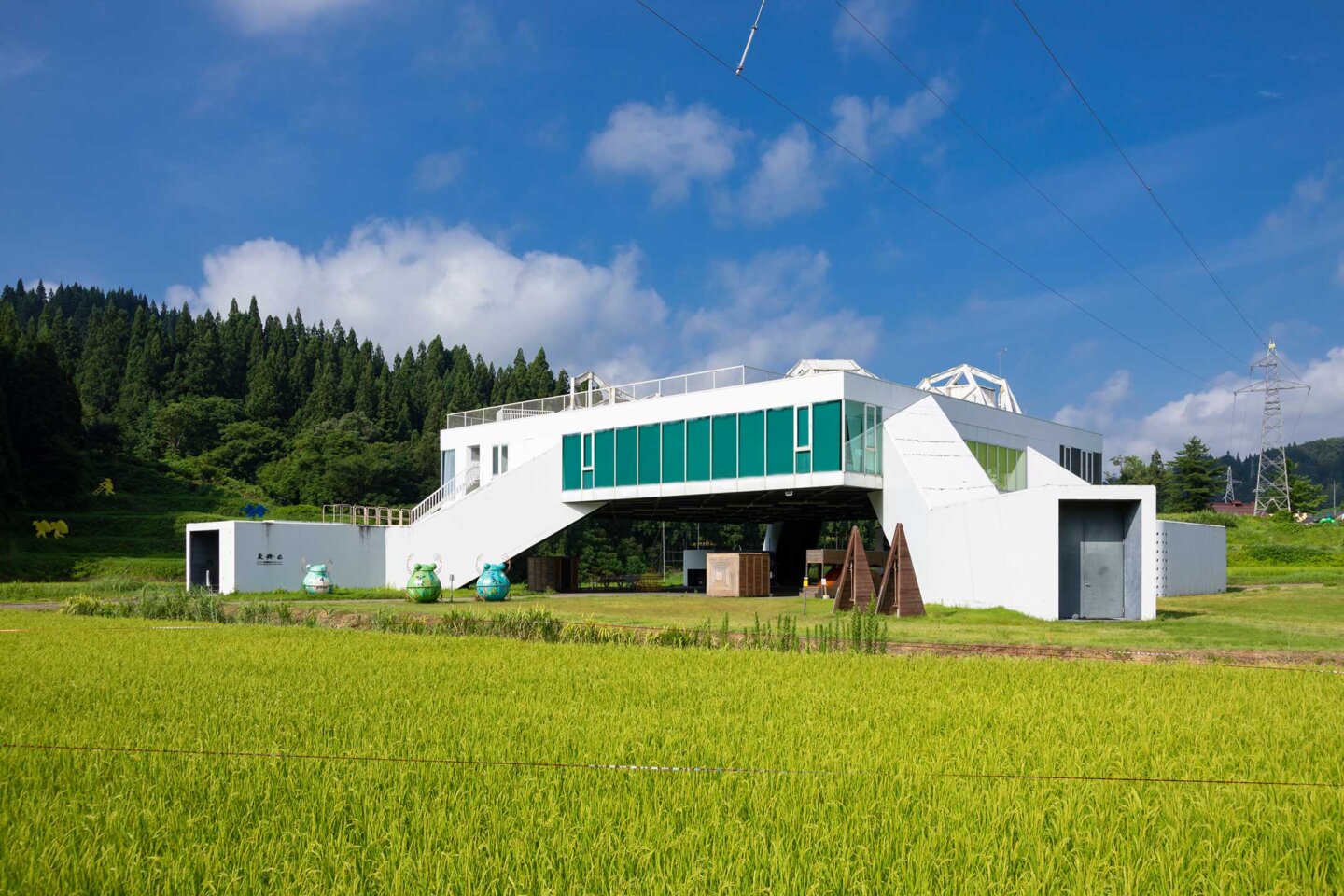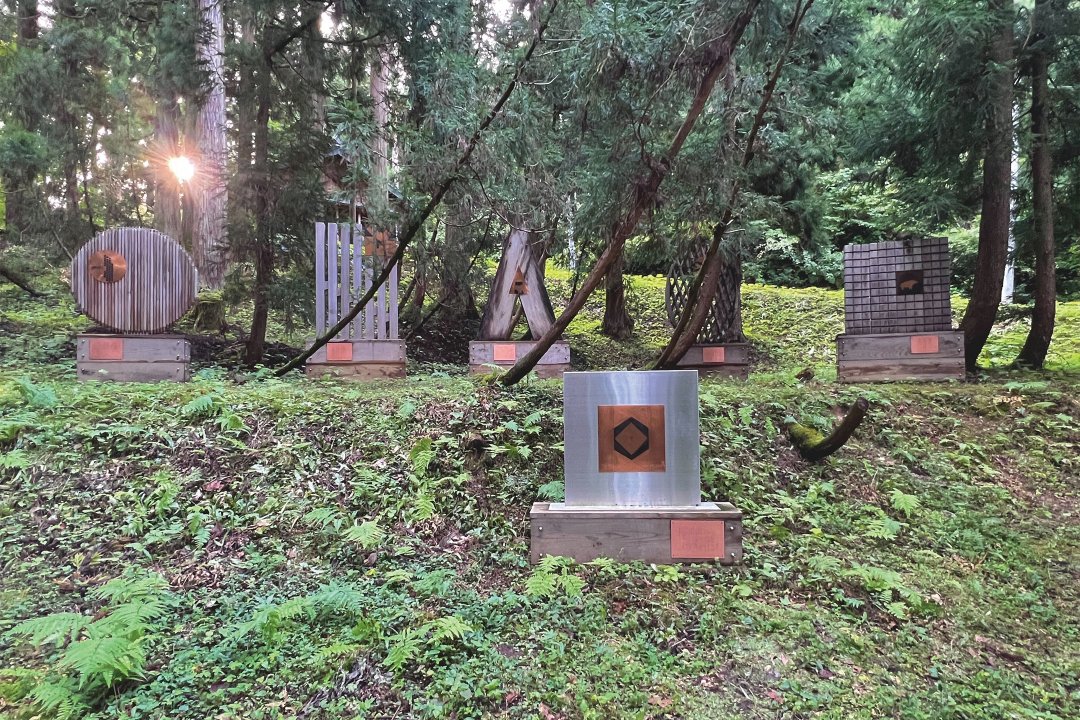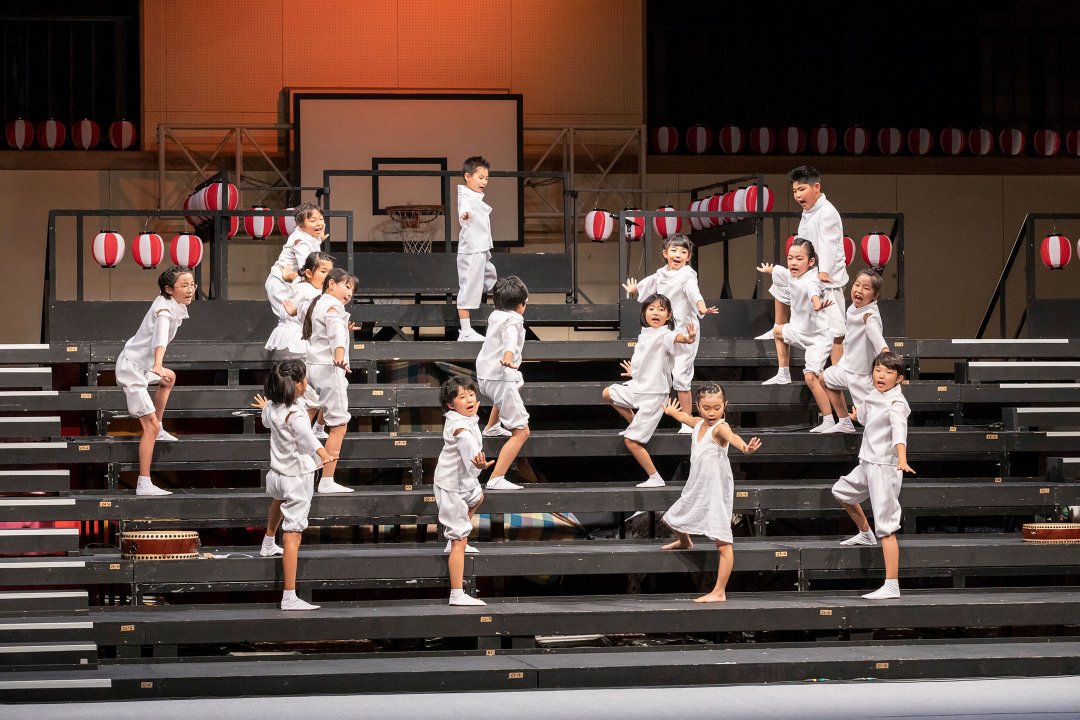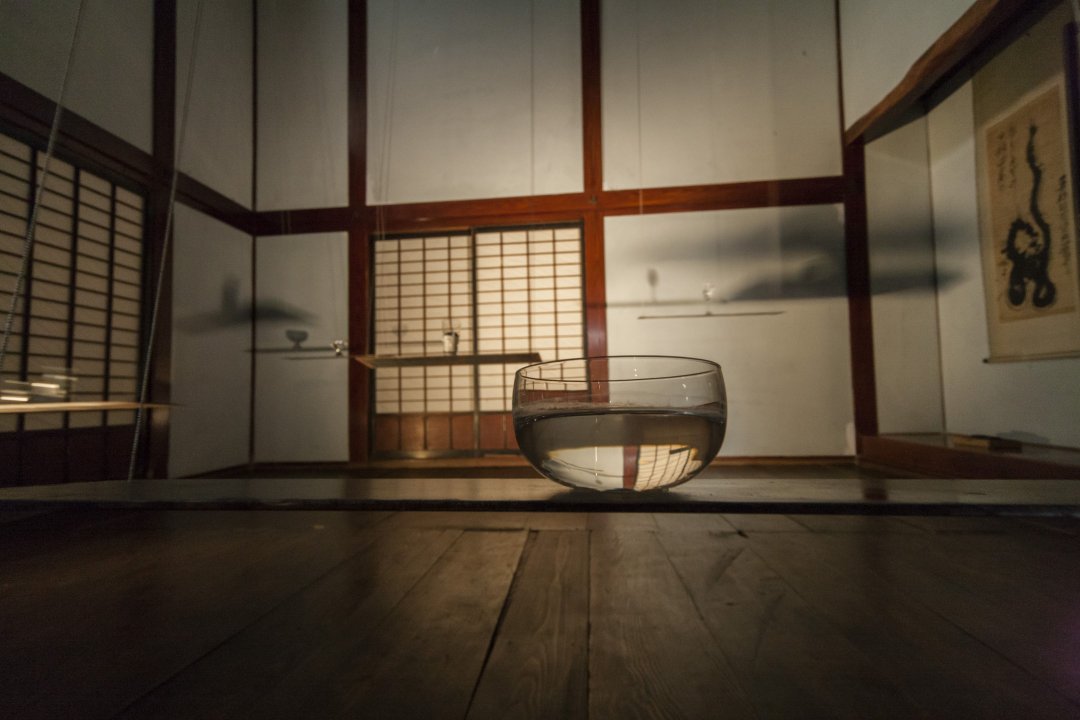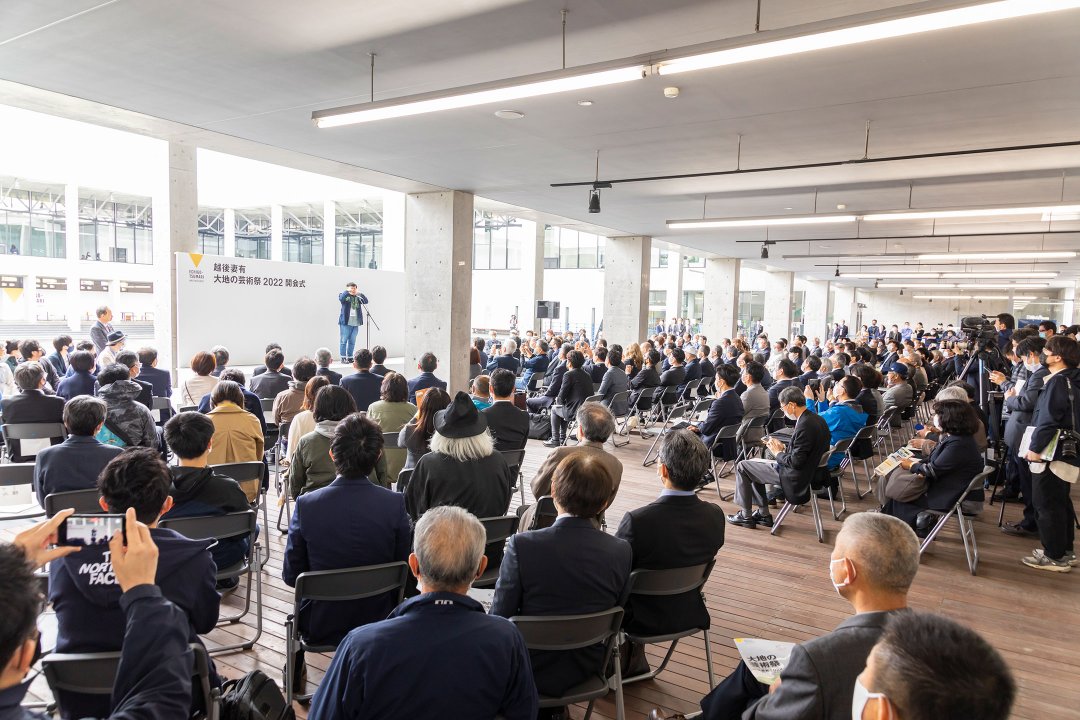Thinking 21st century art in the world from Niigata
Echigo-Tsumari Art Field - Official Web Magazine
Staff / From the backstage of Echigo-Tsumari
Joyama Field Museum – the distinctive and alternative Satoyama landscape
07 December 2019
We ran a workshop with Takano Landscape Planning (TLP) in Joyama behind Matsudai Nohbutai as a part of Joyama Field Museum Project.
Matsudai Joyama is not only the area with masterpieces of artworks from the earlier phase of ETAT spread around but also place where one can have close look at plants, insects and small living creatures and birds in Satoyama. Fram Kitagawa, General Director of the festival has been running “Joyama Club” with Kinichi Matsuyama, the local expert of life in the field once every month. He treasures activities conducted under Joyama Club such as looking at seasonal vegetation and living creatures as well as learning about history of the place which can be called as original pursuit of Echigo-Tsumari.
Joyama Field Museum Project launched in 2016 is a mission to discover uncovered charm of Joyama which represents what Echigo-Tsumari is and has been a home to artworks by internationally acclaimed artists and create distinctive and alternative landscape of Satoyama. While cultivating organic farm patch amongst artworks, paving walkway in the forests and nurturing native vegetation, we have asked co-operations from TLP which has worked on the projects responding to the key words including design, forests and participatory.
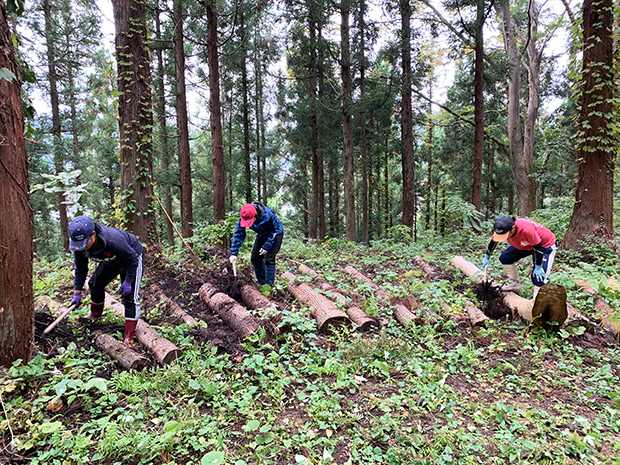
A series of workshops have been organised with TLP. For this occasion, staff members of ETAT and supporters joined paving the forests and yoga in the forest.
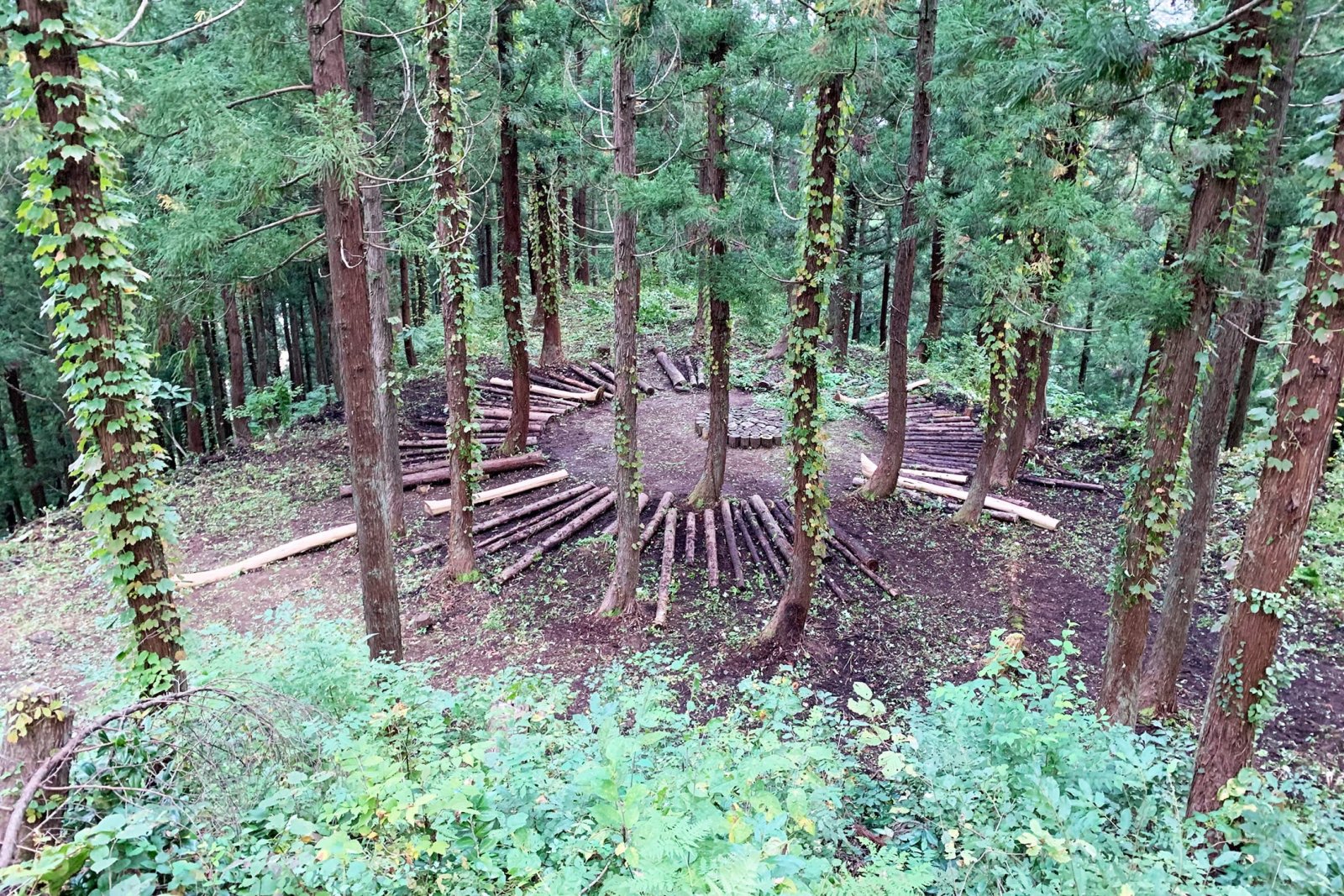
It was once too dark to come this far until we did thinning and cutting off branches of cedars last year. We turned the space receiving sunlight and made a square called “forest for meditation” as well as pathway within the forests.

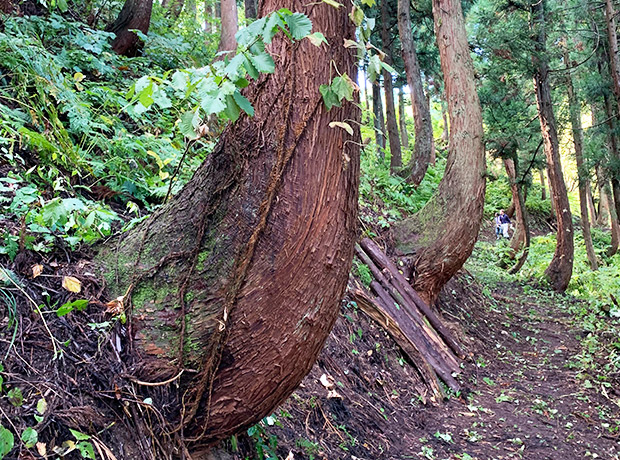
Bent-cedars, distinctive to heavy snowfall region. The root of the tree bent by the weight of snow or being pulled during the snow-melting season. Most of beams in old minka houses in Echigo-Tsumari use this bent cedar tree.
Workshop this time mainly looked after the pave in the forest built last year. Both staff members from ETAT and TLP worked together pulling the weeds and clearing up branches so that the pavement was easy to walk through.
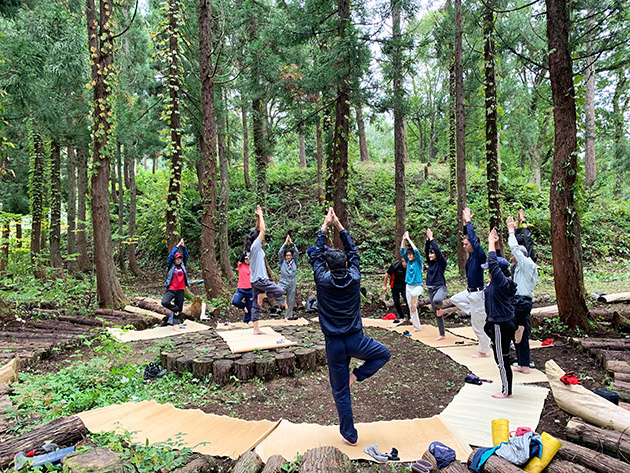
On the following day, students studying forestry and landscape architecture, Kakashitai members, volunteer group of local people based in Matsudai, staff members of ETAT and TLP did weeding, picking up dead leaves and clearing branches in areas where Katakuri (dogtooth violet) grew in cluster and “forest for meditation”. After the work was done, everyone tried yoga in the “forest for meditation” feeling refreshed.
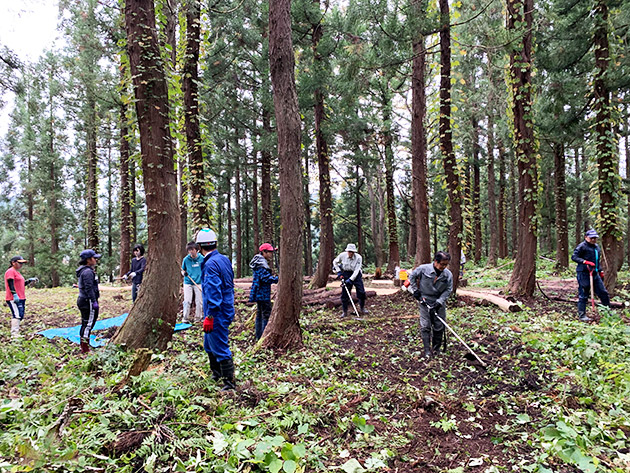

We spent one extra day on paving a pathway which continued on from “the forest for meditation”, connecting the area of katakuri cluster and “forest for meditation” then bringing back to where you started. During a dialogues in the evening, we looked at difference in the forest between Germany and Japan and talked about the future of Joyama with participants. Not only we learnt something we didn’t know but also felt determined to turn Joyama into place where more people would come and see.
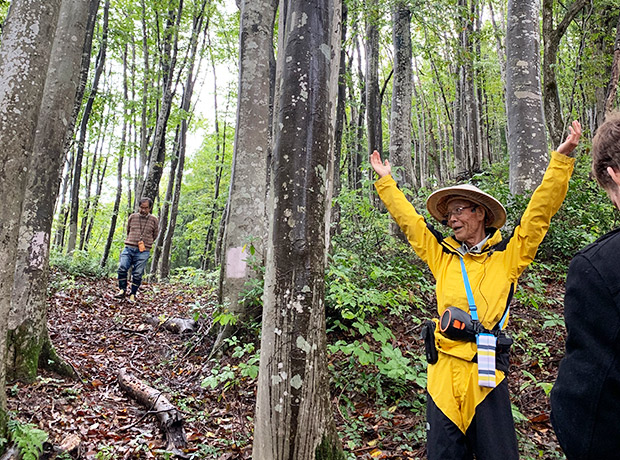
During Joyama Cluc. Guided by the local expert, Kinichi Matsuyama
We joined participants in Joyama Club in Kumakoshiyama (beech tree forest) in Matsudai on the last day. We had such a fruitful time by feeling difference between cedar and beech tree forests, learning about history of Matsudai and vegetation from local expert, Kinichi Matsuyama and being invited to search for favourite trees and leaves by Mr Takano (representative of TLP).
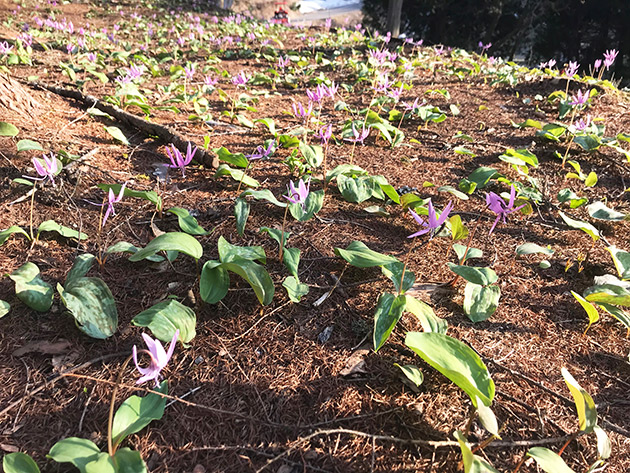
We also managed to hear various views and thoughts about Joyama and its potential from participants and members of Kakashitai (local volunteers). We are very delighted to hear students telling us that “they are keen to engage more”, “they would like to bring their friends next time” and “they will return”.
Katakuri will bloom and cover the entire area next spring – we encourage you to visit Joyama to immerse yourself in nature.
ODAIRA Rie
(NPO Echigo-Tsumari Satoyama Collaborative Organisation / FC Echigo-Tsumari and Joyama)
Translated by Miwa Worrall
PROFILE

Takano Landscape Planning
Launched in Tokyo in 1975 and moved base to Hokkaido in 1990, in the midst of “bubble economy” in Japan. The company develops various projects in response to the three areas of their focus including “design with creativity”, “participatory design”, “forest and ecology movement” and creates rich future for people and environment from perspective of landscape architect. They work on projects in Malaysia, France, Taiwan as well as middle east and Samoa in recent years.
Official website:






